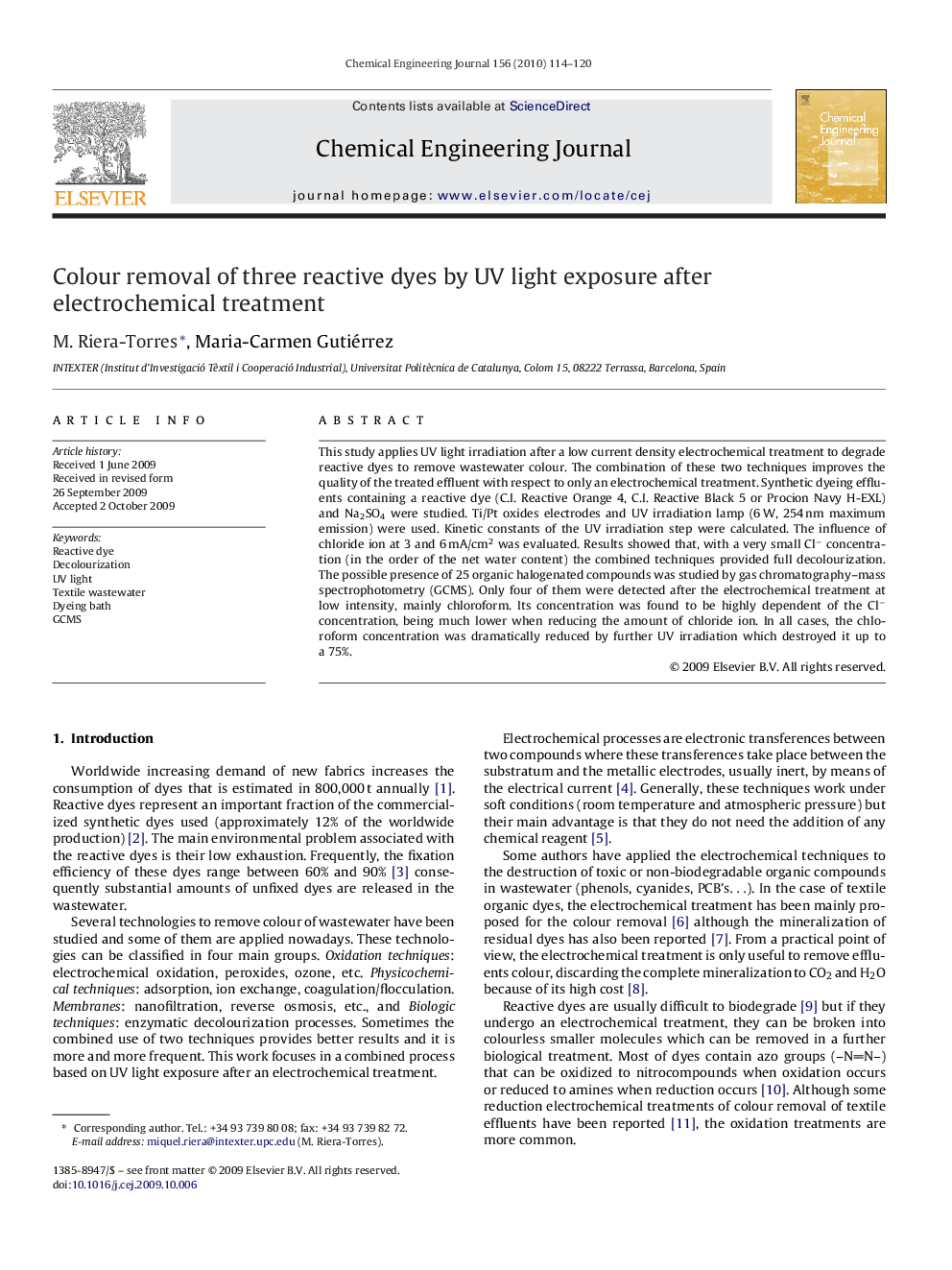| Article ID | Journal | Published Year | Pages | File Type |
|---|---|---|---|---|
| 153166 | Chemical Engineering Journal | 2010 | 7 Pages |
This study applies UV light irradiation after a low current density electrochemical treatment to degrade reactive dyes to remove wastewater colour. The combination of these two techniques improves the quality of the treated effluent with respect to only an electrochemical treatment. Synthetic dyeing effluents containing a reactive dye (C.I. Reactive Orange 4, C.I. Reactive Black 5 or Procion Navy H-EXL) and Na2SO4 were studied. Ti/Pt oxides electrodes and UV irradiation lamp (6 W, 254 nm maximum emission) were used. Kinetic constants of the UV irradiation step were calculated. The influence of chloride ion at 3 and 6 mA/cm2 was evaluated. Results showed that, with a very small Cl− concentration (in the order of the net water content) the combined techniques provided full decolourization. The possible presence of 25 organic halogenated compounds was studied by gas chromatography–mass spectrophotometry (GCMS). Only four of them were detected after the electrochemical treatment at low intensity, mainly chloroform. Its concentration was found to be highly dependent of the Cl− concentration, being much lower when reducing the amount of chloride ion. In all cases, the chloroform concentration was dramatically reduced by further UV irradiation which destroyed it up to a 75%.
